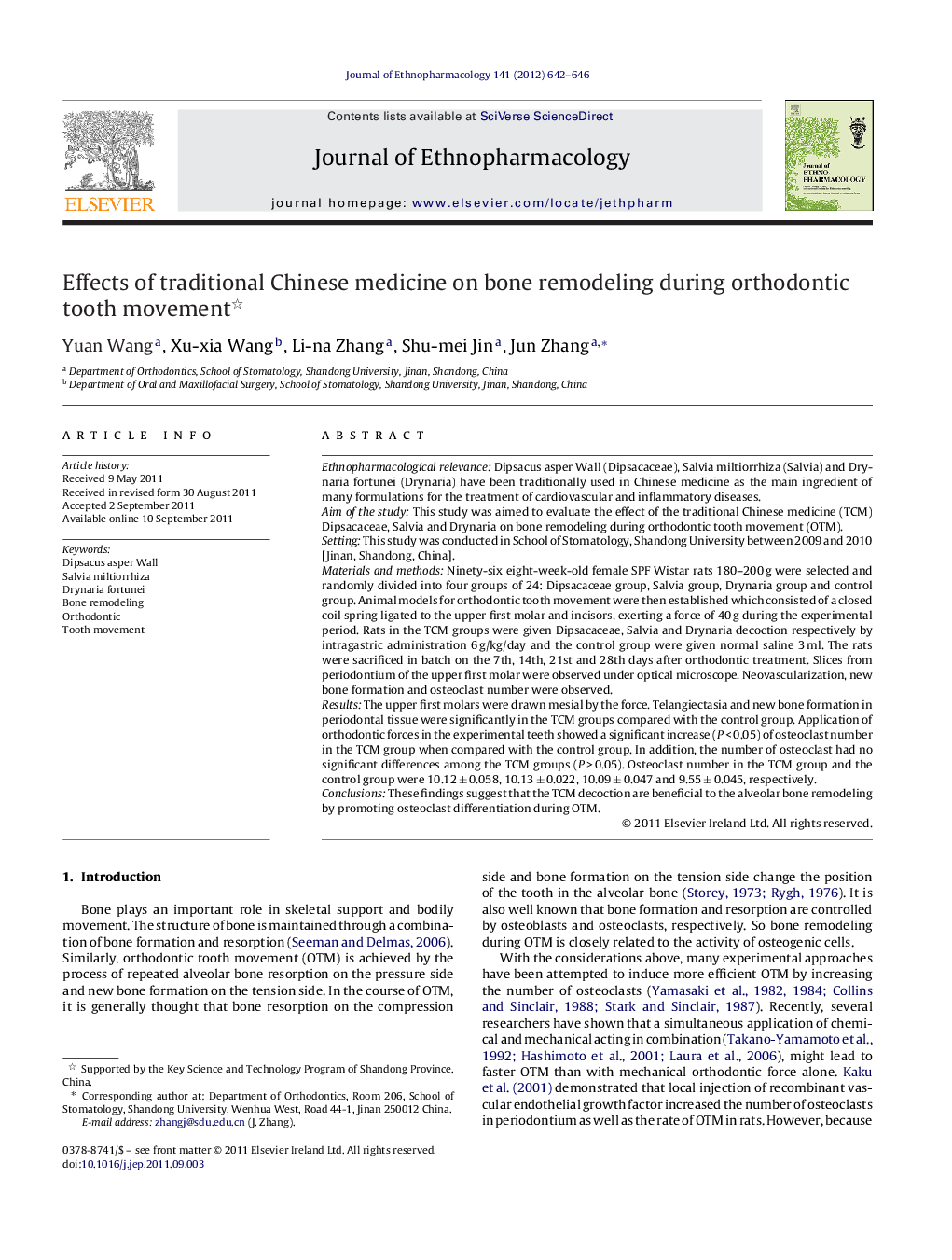| کد مقاله | کد نشریه | سال انتشار | مقاله انگلیسی | نسخه تمام متن |
|---|---|---|---|---|
| 2545600 | 1123969 | 2012 | 5 صفحه PDF | دانلود رایگان |

Ethnopharmacological relevanceDipsacus asper Wall (Dipsacaceae), Salvia miltiorrhiza (Salvia) and Drynaria fortunei (Drynaria) have been traditionally used in Chinese medicine as the main ingredient of many formulations for the treatment of cardiovascular and inflammatory diseases.Aim of the studyThis study was aimed to evaluate the effect of the traditional Chinese medicine (TCM) Dipsacaceae, Salvia and Drynaria on bone remodeling during orthodontic tooth movement (OTM).SettingThis study was conducted in School of Stomatology, Shandong University between 2009 and 2010 [Jinan, Shandong, China].Materials and methodsNinety-six eight-week-old female SPF Wistar rats 180–200 g were selected and randomly divided into four groups of 24: Dipsacaceae group, Salvia group, Drynaria group and control group. Animal models for orthodontic tooth movement were then established which consisted of a closed coil spring ligated to the upper first molar and incisors, exerting a force of 40 g during the experimental period. Rats in the TCM groups were given Dipsacaceae, Salvia and Drynaria decoction respectively by intragastric administration 6 g/kg/day and the control group were given normal saline 3 ml. The rats were sacrificed in batch on the 7th, 14th, 21st and 28th days after orthodontic treatment. Slices from periodontium of the upper first molar were observed under optical microscope. Neovascularization, new bone formation and osteoclast number were observed.ResultsThe upper first molars were drawn mesial by the force. Telangiectasia and new bone formation in periodontal tissue were significantly in the TCM groups compared with the control group. Application of orthodontic forces in the experimental teeth showed a significant increase (P < 0.05) of osteoclast number in the TCM group when compared with the control group. In addition, the number of osteoclast had no significant differences among the TCM groups (P > 0.05). Osteoclast number in the TCM group and the control group were 10.12 ± 0.058, 10.13 ± 0.022, 10.09 ± 0.047 and 9.55 ± 0.045, respectively.ConclusionsThese findings suggest that the TCM decoction are beneficial to the alveolar bone remodeling by promoting osteoclast differentiation during OTM.
Figure optionsDownload high-quality image (151 K)Download as PowerPoint slide
Journal: Journal of Ethnopharmacology - Volume 141, Issue 2, 1 June 2012, Pages 642–646